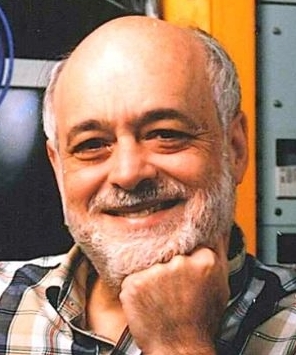
Rubin's undergraduate science education was at MIT where he received his BS degree in 1961. He earned his Ph.D in 1966 from the University of Maryland for studies in elementary particle physics in the theory/experimental research group led by Prof. George Snow. His thesis work there was directed by Prof. Ray Burnstein. Rubin began his academic career at Illinois Institute of Technology in 1966 as an Assistant Professor of Physics where he joined Prof. Burnstein who headed a newly established research group in high energy physics. He was an active participant in particle physics research, teaching and departmental affairs for almost five decades at IIT. His research activities were continuously supported by the Department of Energy and the National Science Foundation.
Rubin's first experimental work was analyzing data from bubble chamber experiments performed at CERN, from which many predicted "standard model" particles were identified. He was involved in data analysis from bubble chamber experiments at Argonne National Laboratory and later used the 15 ft bubble chamber at the then newly-established Fermi National Accelerator Laboratory (Fermilab). One major experiment was Fermilab E545 which performed the first precision studies of neutrino-neutron interactions.
Over the years Rubin made numerous noteworthy contributions to the field of experimental high energy physics in the important area of data analysis. These skills eased his transition to the analysis of electronic-detector experiments with their massive data samples and fueled his lifelong interest in advanced computing technology. Highlights of the Fermilab electronic-detector experiments on which he collaborated include: E791, a high-statistics study of charm and beauty hadroproduction performed during the 1980s at the Tagged Photon Laboratory, which recorded the world's then-largest data sample of 100,000 reconstructed charm decays. Computing for that experiment pioneered the use of "Linux farms," built from dozens to hundreds of commercial PCs. Another experiment, E871 sought in the 1990s to study CP violation, testing matter-antimatter symmetry via precision studies of strange baryons ("hyperons"). This experiment also recorded the world's then-largest data sample, 120 terabytes on 29,301 tape cassettes, yielding a reconstructed hyperon sample of 2.5 billion events. In the 2000s, there was MINOS, a neutrino oscillation experiment, in which a neutrino beam was sent from Fermilab deep under Wisconsin to a detector in Minnesota to measure changes during flight in the properties of the neutrinos. Rubin developed and maintained the scripts to submit, organize and monitor the large amount of data analyzed with the updated Fermilab computer farms.
Rubin taught numerous courses in his years at IIT, including General Physics, Classical Mechanics, Modern Physics, and Instrumentation Laboratory. He took his teaching responsibilities seriously and maintained the rigorous standards expected by a technical university. He was always willing to listen to students and help them one-on-one.
In addition to his research and teaching contributions, Rubin served the Department of Physics as Associate Chair both in the 1980's and the 2000's.